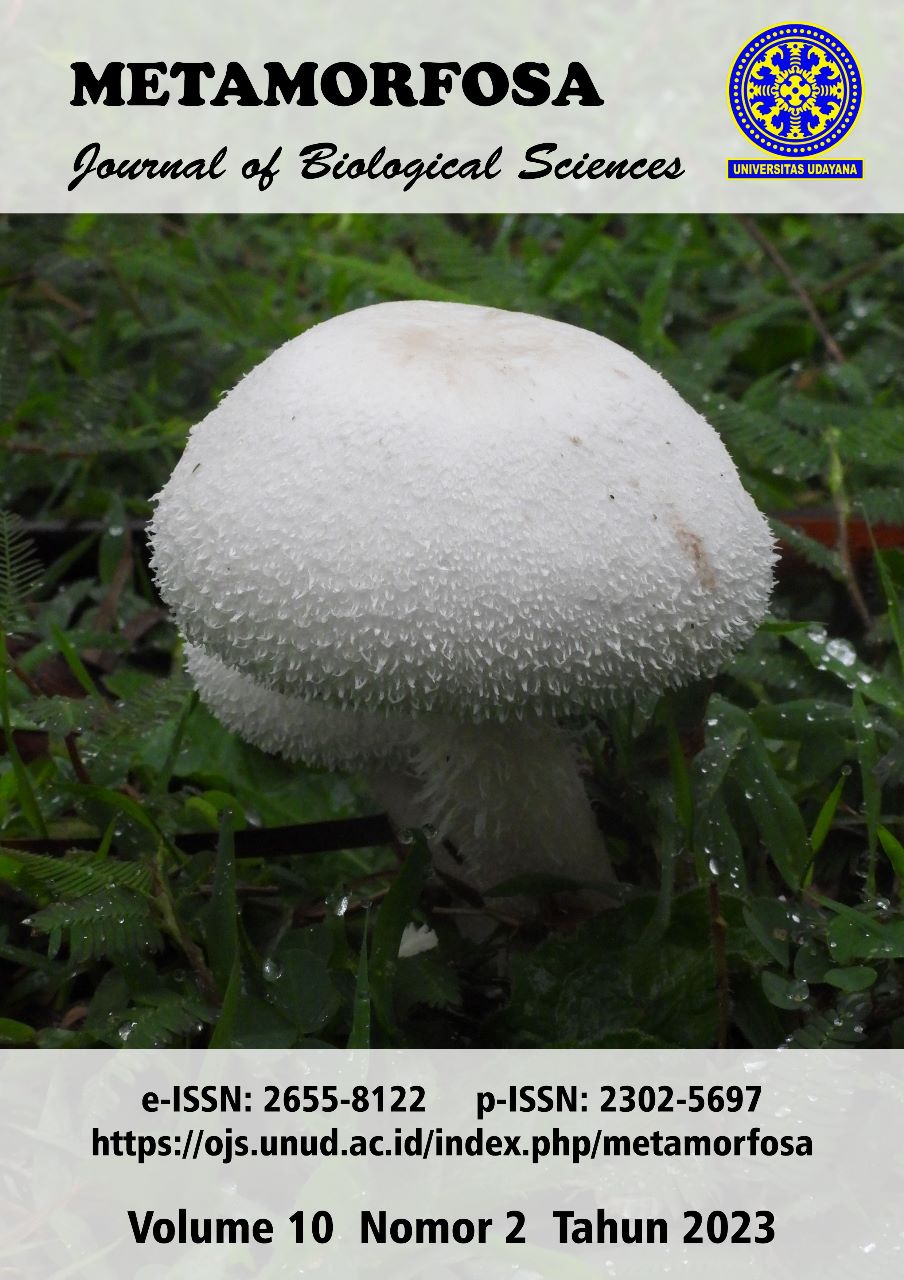Antibiogram Profiles of Pathogenic Bacteria Isolated from Clinical Specimens at Clinical Bacteriology Unit of UPTD Balai Laboratorium Kesehatan Provinsi Bali
##plugins.themes.bootstrap3.article.main##
Abstrak
Antibiotic-Resistant Bacteria (ARB) bacteria were triggered by inappropriate antibiotic therapy. Bacterial resistance can be monitored through surveillance of bacterial growth pattern and their susceptibility to antibiotics. This study presents a sensitivity profile of pathogenic bacteria, isolated from clinical specimens, against various antibiotics. The present description was based on a secondary data that was obtained from a series of sensitivity test that was conducted between January 2019 and December 2021 in UPTD Balai Laboratorium Kesehatan Provinsi Bali. All data was processed using WHONET 2021 software and further calculated using Ms. Excel 2007. From a total of 419 samples taken from an average age of 40.7±17.9 years, 332 showed positive cultures, with females being the majority (55.7%). The positive cultures consist of 125 urine specimens (37.7%), 79 feces(23.8%),49 eyes (14.5%), 29 throat swabs (8.7%), and 21 sputum specimens (6.3% ). The Gram positive group was dominated by Staphylococcus sp. 73 (54.5%) and Streptococcus sp. 40 (29.9%), while the Gram negative group was dominated by E. coli 71 (35.9%) and EPEC 33 (16.7%). The Gram negative bacteria showed highest sensitivity to amikacin (83.8%), the lowest to erythromycin (1.5%). The Gram positive bacteria were most sensitive to doxycycline (68.6%) and the least sensitive to cefixime (9%). Six pathogen that commonly cause nosocomial infections, demonstrated increased resistance to antibiotics: E. coli to chloramphenicol, ofloxacin, and levofloxacin; EPEC to cefazoline, ceftriaxone, cefixime, and levofloxacin; Klebsiella sp. to amikacin; P. aeruginosa to ceftazidime, amikacin, ciprofloxacin, gentamicin, ceftriaxone, and piperacillin; S. aureus to tetracycline, amoxicillin, and azithromycin; Streptococci to ceftazidime, erythromycin, doxycycline, and levofloxacin. This analysis provides referrals for medical personnel in healthcare facilities to use appropriate antibiotics.


